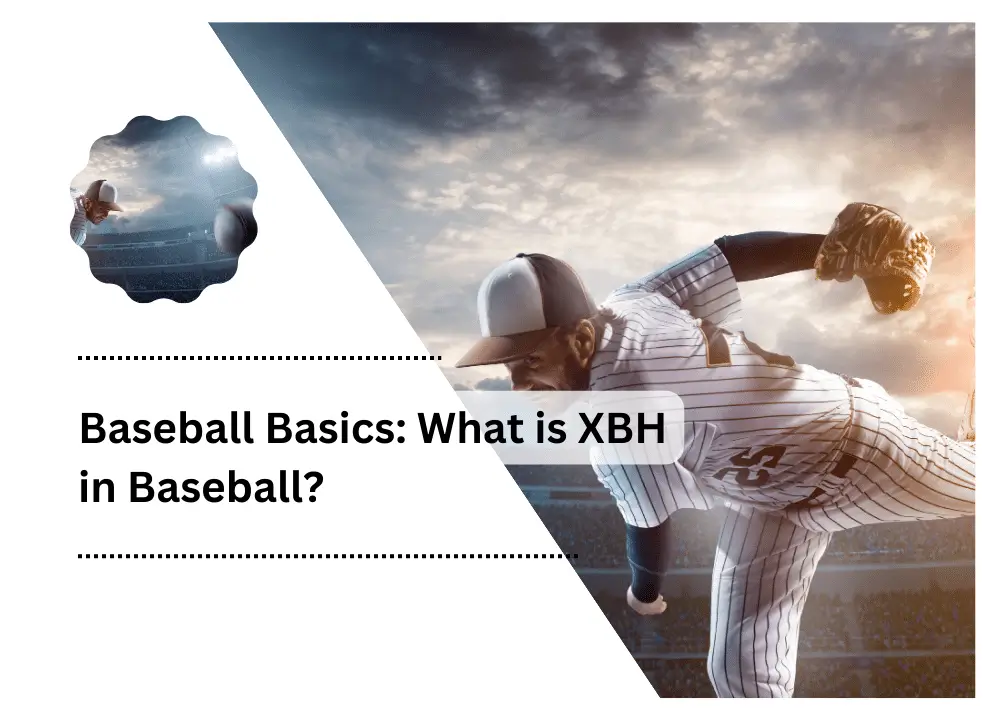
What is the XBH in Baseball? There are four primary types of hits in baseball that are generally well-known even to those who are not avid fans: the single, double, triple, and the home run. However, there is another term you may come across: the extra-base hit (XBH).
An XBH or extra-base hit encompasses any type of hit other than a single, including doubles, triples, and home runs. In simpler terms, it is not a distinct category of hits but one that encompasses several types of hits. The term “extra-base hit” is used because the batter advances more than one base on a single ball in play.
In the realm of baseball, an extra-base hit (referred to as EB, EBH, or XBH), also known as a long hit, is any base hit in which the batter is able to advance beyond first base without relying on a fielding error or a deliberate throw by a fielder to retire another base runner.
Extra-Base Hit – Types
Generally, there are three types of extra-base hits: doubles, triples, and home runs. When a hitter reaches second base safely on a hit, it is a double hit. If a hitter reaches third base safely on a hit, it would be a triple, and a home run is when a hitter reaches home plate safely on a hit. Still, there are a few more different types of home and double runs, all of which are considered as extra-base hits.
A single hit is most commonly referred to as a base hit, as the batter advances one base when he moves from home plate to first. Likewise, a double is called a “two-base hit,” and a triple is a “three-base hit.” Similarly, a home run is called a “four-bagger.”
Extra-base hit is a collective term referring to any hit where the batter moves up multiple bases. Therefore, the name is not as straightforward as single, double, triple, or even a home run, and it is really a quite simple concept indeed.
Most home runs are actually hit when the batter gets the ball successfully over the wall in the outfield, although it is also possible to hit an inside-the-park home run, as long the batter can run around the bases by the time an opposing team tags him out. Moreover, a hitter may also earn a double by hitting the ball over the outfield fence in case the ball bounces in the field of the play first. This is commonly known as an automatic double or ground rule double. All of these types of hits are considered extra-base hits, no matter whether the ball goes over the wall or not.
How to Calculate Extra-Base Hits?
Calculating extra-base hits isn’t a tough task. Simply add up a hitter’s total number of all the doubles, triples, and home runs. The formula for this looks like:
XBH = 2B + 3B + HR
Otherwise, take a batter’s total number of hits and minus their total number of singles, as extra-base hits include all hits other than singles. Then it would look like:
XBH = H – 1B
How Many XBH is a Lot?
Up to one hundred extra-base hits in one single season is considered a remarkable achievement, which has only been recorded 13 times in Major League Baseball history. Hitting 75-90 extra-base hits in a season is still considered very impressive. Nowadays, the very best power hitters succeed in hitting that many. Even then, it is uncommon for more than a small handful of players to have 75+ XBH in one single year.
Who Has the Most XBH in MLB History?
Hank Aaron is considered the all-time leader with 1,477 career extra-base hits. Barry Bonds (1,440) and Albert Pujols (1,405) are the two other players having more than 1,400 career extra-base hits. Just 39 players, all-time, have successfully reached 1,000 career extra-base hits.
The 2003 Boston Red Sox hold the record, in a single year, for most extra-base hits by a team of 649. In 2019, the Minnesota Twins got very close to breaking the record, with 648 XBH in that very season.
The Chicago Cubs enjoy the all-time MLB team record for most extra-base hits. The Cubs, since 1876, existed as a franchise and have 55,250 XBH to show for it. That’s more than 2,000 XBH than the next super team, the St. Louis Cardinals.
XBH Stats 2023Top of FormPlayer CXBH
| Rank | Player (2023 XBHs) | XBH |
| 1 | Hank Aaron | 1,477 |
| 2 | Barry Bonds | 1,440 |
| 3 | Albert Pujols | 1,405 |
| 4 | Stan Musial | 1,377 |
| 5 | Babe Ruth | 1,356 |
| 6 | Willie Mays | 1,323 |
| 7 | Alex Rodriguez | 1,275 |
| 8 | Ken Griffey Jr. | 1,192 |
| 9 | David Ortiz | 1,192 |
| 10 | Rafael Palmeiro | 1,192 |
Is a Home Run Considered An Extra-Base Hit?
The quick reply is Yes. A home run does count as an extra-base hit. Few people wonder whether a home run counts as an extra-base hit or a hit as it leaves the field of play. Moreover, the batter returns to the dugout after running all around the bases. However, the answer is quite clear and simple: a home run is taken as both a hit and an extra-base hit.
How Many Extra Base Hits Is a Home Run?
Every type of extra-base hit, whether it is a double, a triple, or a home run, is counted as only one extra-base hit. In simple words, to know a player’s total number of XBH, you just need to add up how many doubles, triples, and home runs that player hits. There are no extra points for hitting a home run, although a batter advances more bases on a home run as compared to any other type of hit.
Therefore, the simple answer is that a single home run is considered as one extra-base hit.
However, there is yet another, almost similar statistic called “total bases.” To calculate this statistic, different types of hits are weighted in different ways, so a home run counts as more total bases than a triple, a double, or a single.
Importance of Extra-Base Hits as a Statistic in Player Evaluation
Extra-base hits are taken as a key statistic in player evaluation. This is because they provide insights into a player’s ability and power to produce offense.
As singles count as a player’s batting average, extra-base hits contribute to their ability to hit the ball even with greater force and generate more extra bases. They showcase a player’s capability to drive in runs, contribute to their team’s offensive output, and also create scoring opportunities.
Relation Between Extra-Base Hits and Slugging Percentage
There is a strong correlation between slugging percentage and extra-base hits. Slugging percentage counts the average number of total bases achieved per bat, rendering it a valuable metric for monitoring extra-base hit production and player’s power.
Players who continuously hit doubles, triples, and home runs have higher slugging percentages, showcasing their ability to generate extra bases and influence the game impertinently.
Conclusion for What is XBH in Baseball?
In conclusion, understanding XBH in baseball goes beyond recognizing the conventional hits like singles, doubles, triples, and home runs. The term “extra-base hit” encompasses all hits beyond a single, including doubles, triples, and home runs. It is a collective term that represents the batter advancing more than one base on a single play.
The calculation of XBH is straightforward, involving the summation of doubles, triples, and home runs. Achieving up to one hundred extra-base hits in a season is considered remarkable, with historical figures like Hank Aaron, Barry Bonds, and Albert Pujols leading the charts.
In essence, the concept of XBH encapsulates the dynamic and impactful nature of hits that go beyond the traditional single, adding depth to the evaluation of players and teams in the realm of America’s favorite pastime.
